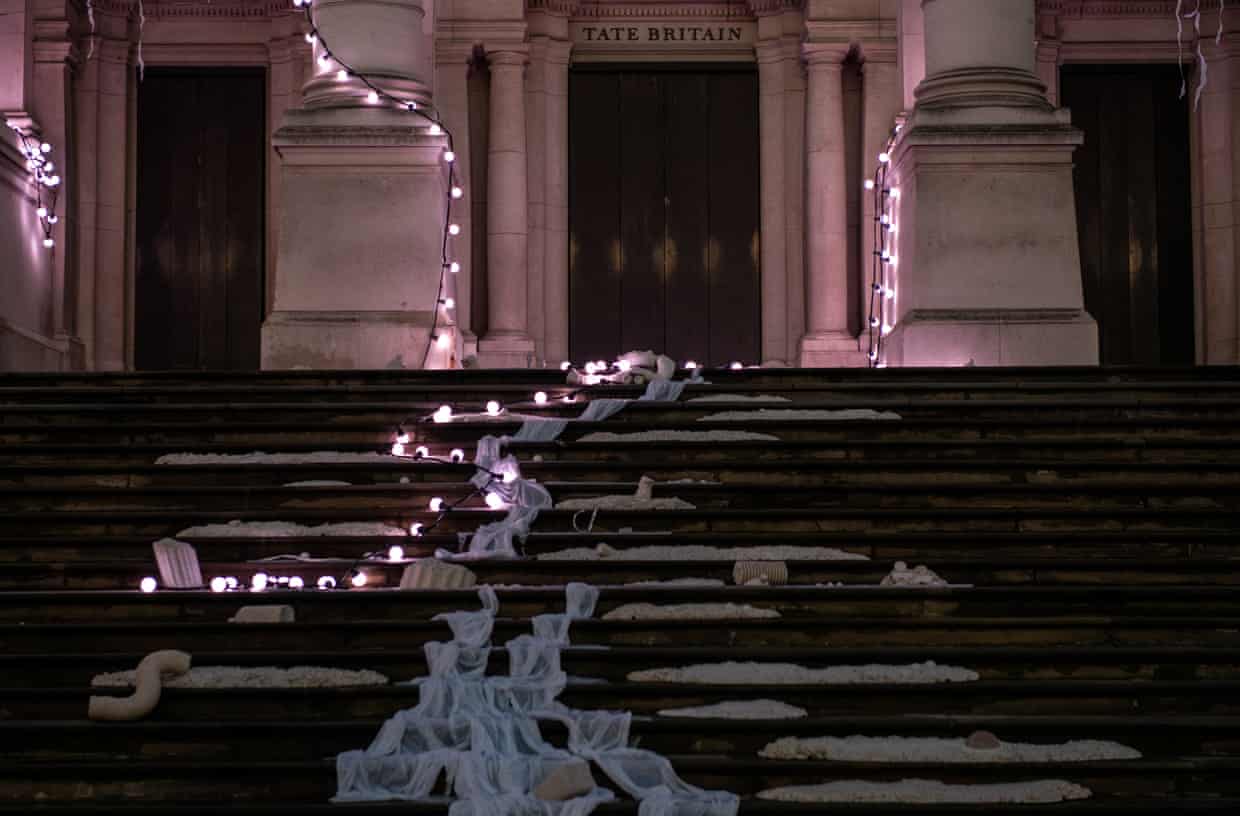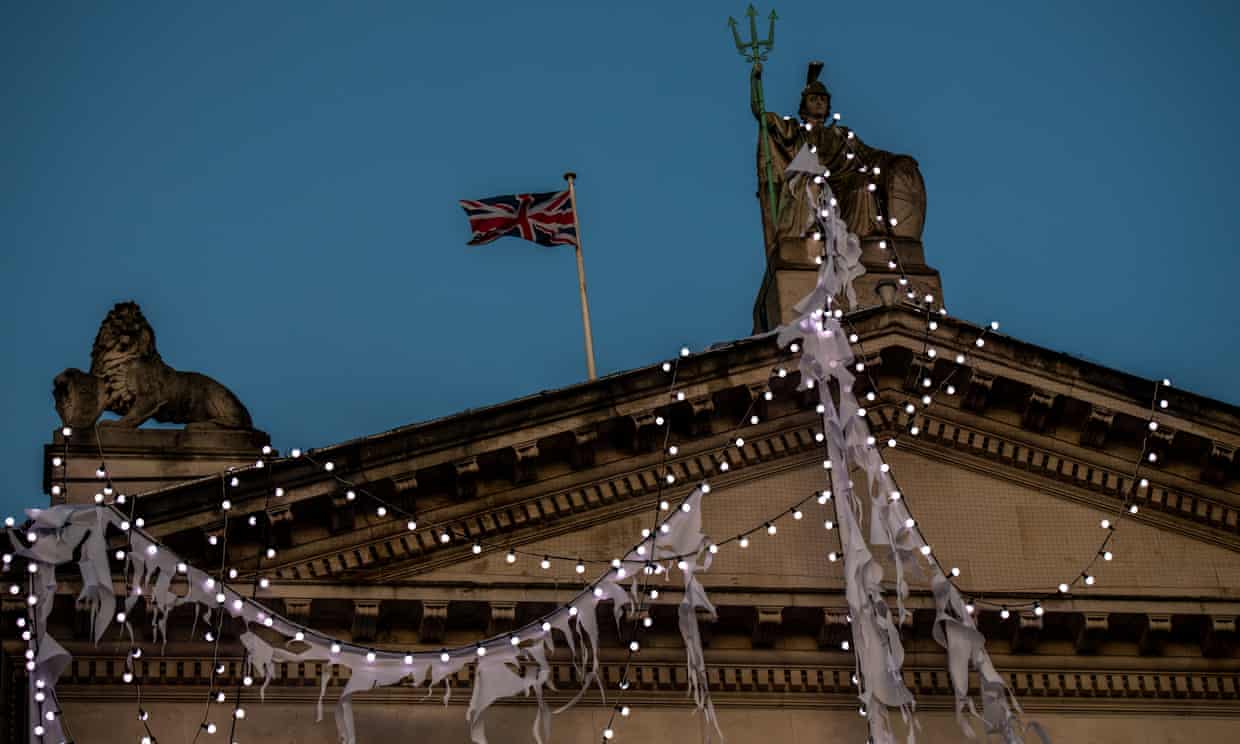
Tate Britain unveils post-apocalyptic Christmas decorations
by Mark BrownAnne Hardy transforms front of London gallery with ice, mud, tangled lights and torn banners
Loud sounds of crashing thunder, cawing tropical birds, swarming mosquitoes and the smash of collapsing ice will greet visitors to what could be life after the Apocalypse, but is in fact Tate Britain this festive season.
The gallery on Friday unveiled its annual winter commission, when it invites artists to transform the front of its grand building on the Thames.
In previous years it commissioned Christmas trees by artists including Tracey Emin and Cornelia Parker. Two years ago Alan Kane festooned the front of the building with cheesy Christmas lights and last year Monster Chetwynd celebrated the mating ritual of leopard slugs.
This year Anne Hardy has been drawn to the winter solstice. “The solstice is bang in the middle of the commission, 22 December, and all the other festivals come from the solstice,” she said.

Hardy is known for large-scale sculptural installations, or field works, which combine sound, light and atmospheres with physical materials.
The Tate commission is her most ambitious project yet, creating what could be a ransacked temple with tattered banners and tangled cables of lights. On the stairs are pools of ice and sculptural patches of river mud and broken columns.
Add the 21-minute quadrophonic sound work and it gives the impression the building may have been possessed. Something has happened and whatever it is, it’s not good.
Hardy said she hoped people might stop and consider how fragile our existence is. “The work is a proposition to think about the reality now in a different way, by manifesting other potential realities of this site that might have been in the past, or might be in the future.
“It is a challenging site but the gift of it is that it [Tate Britain] is an amazing object. I work with found materials a lot in my work and I thought that was the way to approach this – as a found object. What could it become that it isn’t now?”

The title of the work, The Depth of Darkness, The Return of the Light, comes from a pagan description of the winter solstice.
Alex Farquharson, director of Tate Britain, said he was excited to see the transformation of the “iconic facade” of the gallery. “Anne Hardy has created something that is at once fantastically imaginative and urgently topical, reminding us not only of the changing seasons but also of the changing climate.”
- The Depth of Darkness, the Return of the Light is at Tate Britain from 30 November to 26 January.